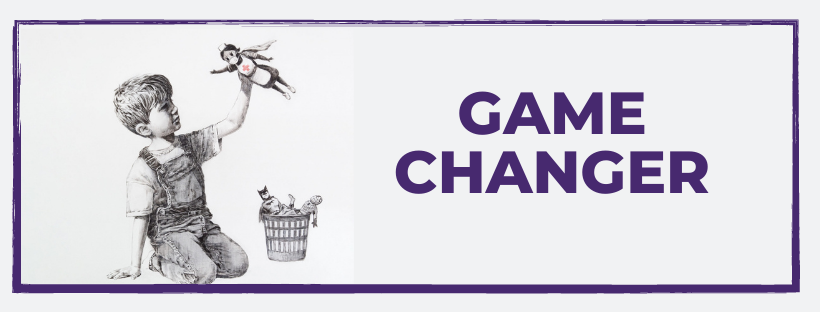Gender Equity and Leadership Diversity – Unlocking the Value of Our Talent Pool
30 Mar 2021

Last week a Banksy painting titled Game Changer was sold at auction for almost $30 million AUD, the proceeds of which will go to hospital staff, patients, and NHS charities.
The painting which looks to be a child playing with superhero toys, on closer inspection depicts a young boy lifting a toy nurse figure, complete with a superhero pose and cape, while the figures of Batman and Spiderman sit discarded in the bin behind.
The painting sold on the one-year anniversary of the UK’s first national lockdown, a day fittingly titled National Day of Reflection – a jarring reminder of how we have reassessed the value of roles within our community and society because of COVID-19.
Another day of reflection also occurred this month, International Women’s Day (IWD). Adopted by the United Nations in 1975 as a formal day of recognition, IWD is a global event used to reflect on the progress of women and act as a focal point to advance women’s rights and gender equality.
While progress has been made in some countries, some sectors and some segments of the workforce, the reflections of International Women’s Day in 2021 evidence that the pandemic unequally affected women, from losing jobs to having a greater care burden, and the gender pay gap is still very much real. Evidence shows that in our part of the world, and on our current trajectory, closing the gender pay gap will take a hundred years.
So why should gender equity and leadership diversity be so important?
McKinsey’s Women Matter research, along with other studies, found that:
- Companies in the top quartile for gender diversity are 15 per cent more likely to have financial returns above the average in their national industry.
- Female CEO’s in the not for profit and NGO sectors were deemed to be more successful at realising their organisations mission and goals, agencies often regarded as the backbone of communities in good times and bad.
- Gender equity in political systems enhanced education spending for future generations and reduced corruption.
From a broader societal perspective, they also estimated that almost $12 trillion could be added to global GDP by 2025 if the gap were to be closed.
Knowing how to move the dial can be overwhelming. However, there are solutions and McKinsey identified nine practices used by leading Australian companies to get higher numbers of women into senior roles, as detailed below.
| Strategies to Support Gender Equity and Leadership Diversity |
| 1. Role-model a commitment to diversity, including with business partners and stakeholders and showcase the benefits because of that commitment. |
| 2. Redesign roles to enable flexible work and normalize uptake across levels and genders. |
| 3. Actively sponsor rising women. |
| 4. Set a clear diversity aspiration, backed up by accountability. |
| 5. Support talent through life transitions. |
| 6. Ensure the infrastructure is in place to support a more inclusive and flexible workplace. |
| 7. Challenge traditional views of merit in recruitment and evaluation. |
| 8. Invest in frontline-leader capabilities to drive cultural change. |
| 9. Develop rising women and ensure experience in key executive and decision-making roles. |
As the world is currently in transition to a new normal, gender equity and leadership diversity will be critical if we are to adapt to a highly connected world with constantly changing expectations. It is paramount we unlock this workforce potential and opportunities, not only because women are one half of the world’s population but because ensuring the healthy development and appropriate use of all the world’s talent pool will have a significant outcome on our ability to effectively function and thrive amongst the challenges of a post COVID world.
This is not a battle between the sexes. We are all set to gain., However to do so we must shift thinking and ignite action, or we continue to constrain our talent pool and our potential.
We need to target all societal drivers, from the factors influencing individuals making education and career choices, through to societal expectations on the roles and value of men and women as carers and breadwinners, the impact of unconscious bias and the glass ceiling effect on our workforce structure and culture.
We must think more holistically about the system we are part of and the influences on it. We need to build a collective understanding of why removing barriers is so important. Barriers not just in the workplace, but in our kindergartens, around our kitchen tables and on our screens.
As employers and executives, we too must consider what measures can we take to help redress that imbalance, not just to support women but to ensure that we are genuinely unlocking the available talent pool and providing the necessary diversity of leadership to support us navigating one of the most challenging periods in modern-day history.
At HG we are intentional and dogged in the pursuit of Finding as well as Growing Great Leaders, but we know there is also more we must do. It is a challenge we choose to accept.
As leaders of companies and agencies, what will you #choosetochallenge and do to be a game-changer?

